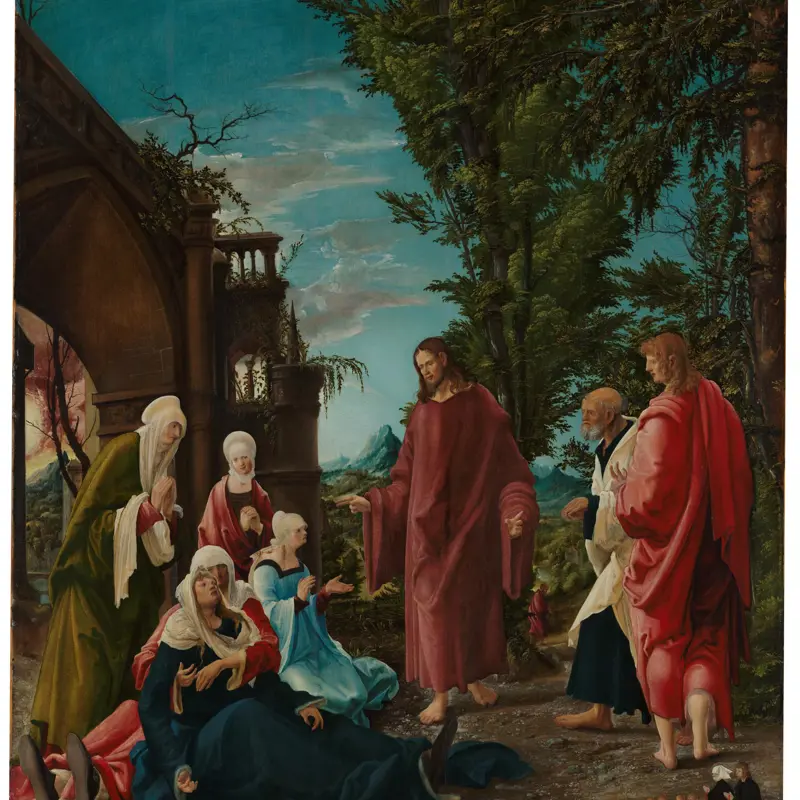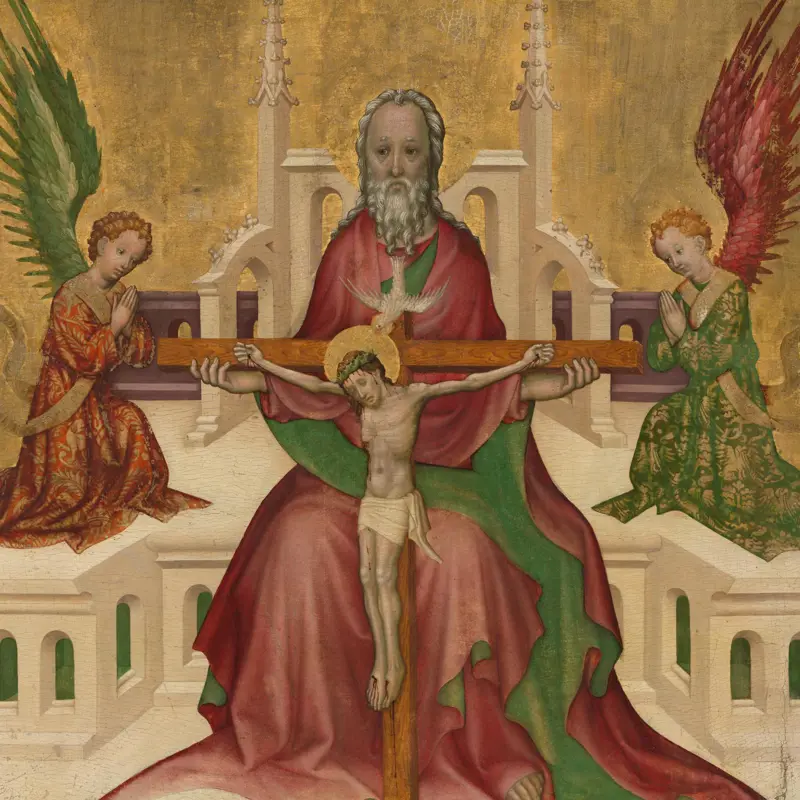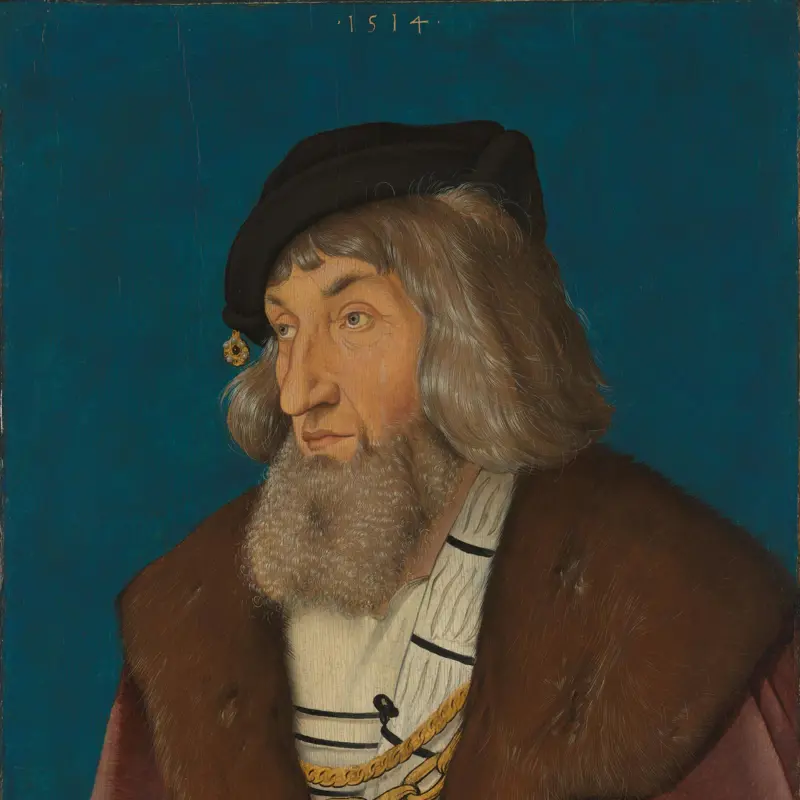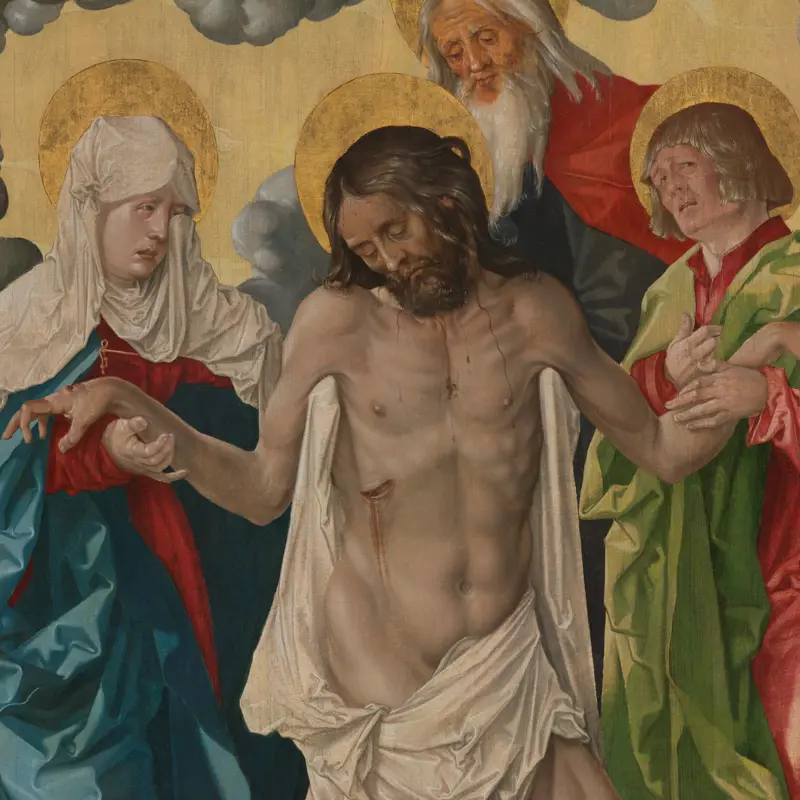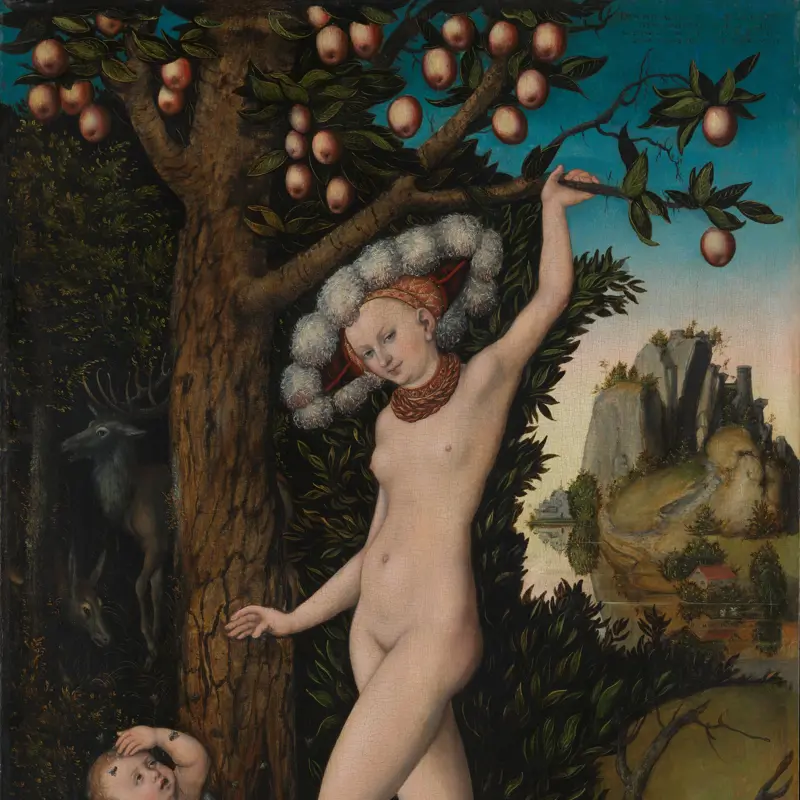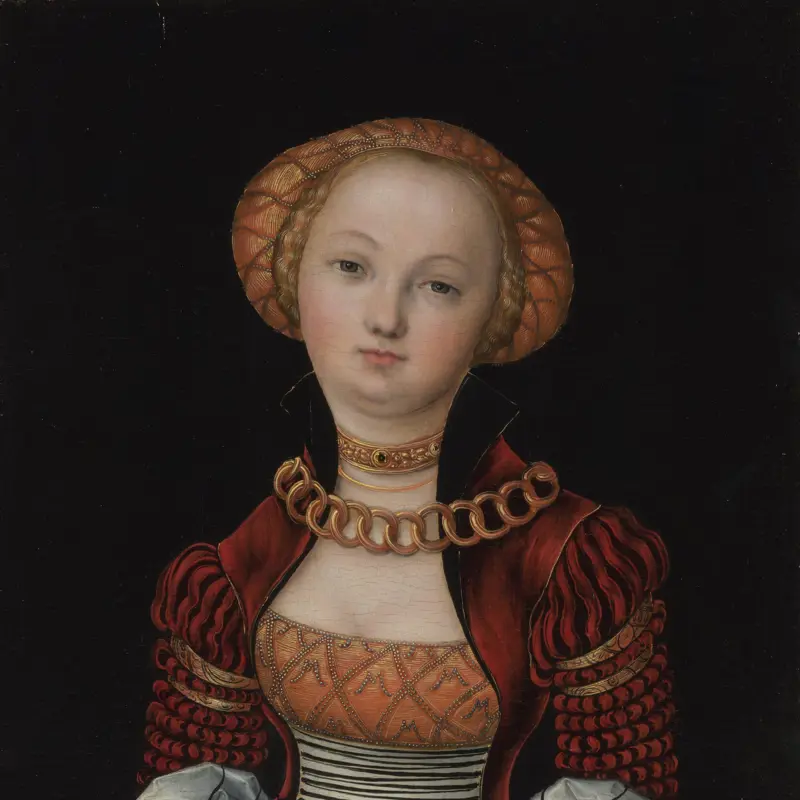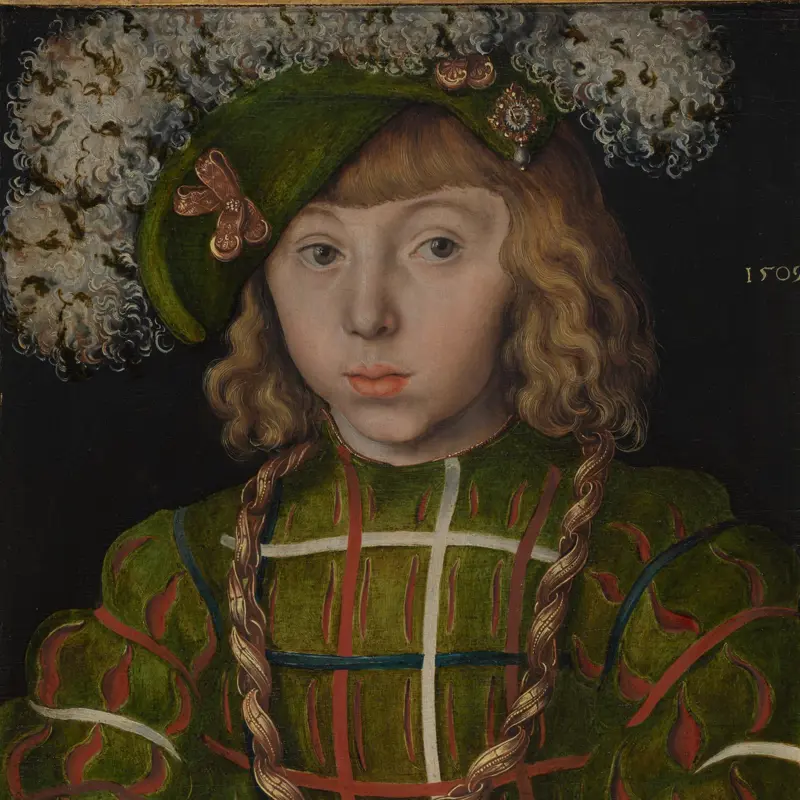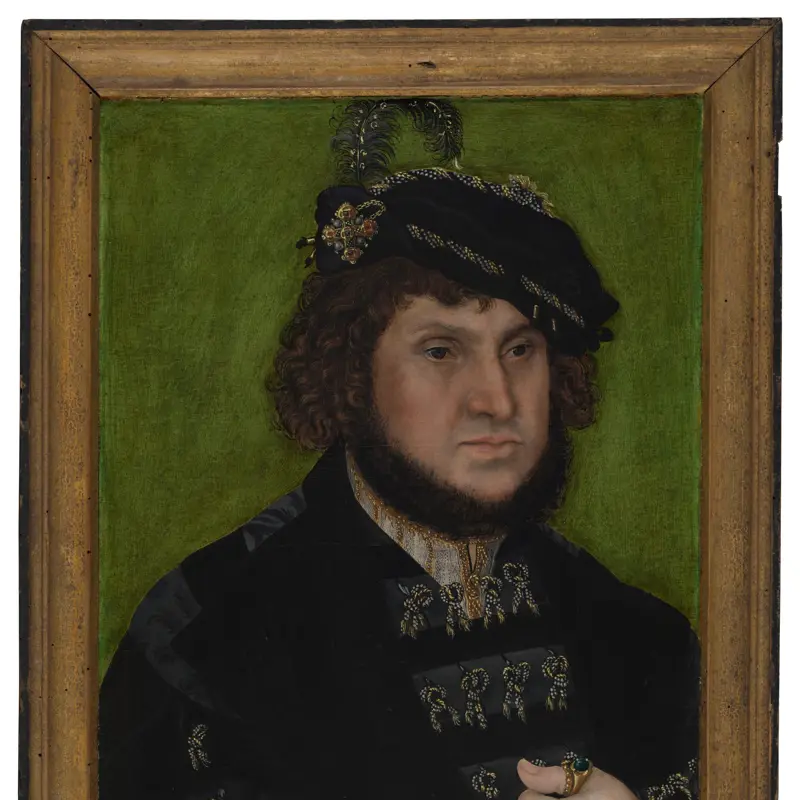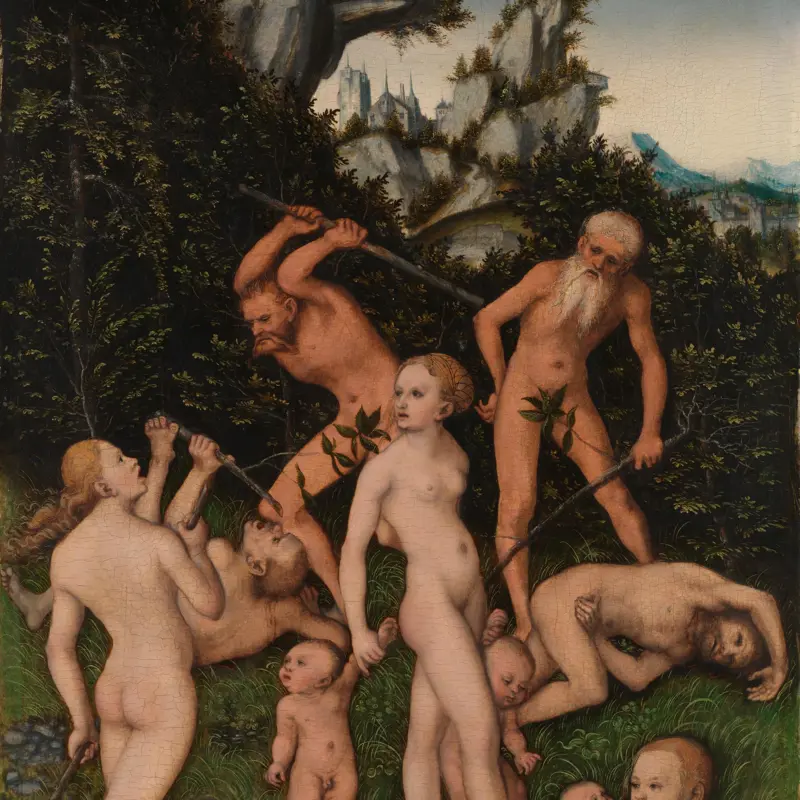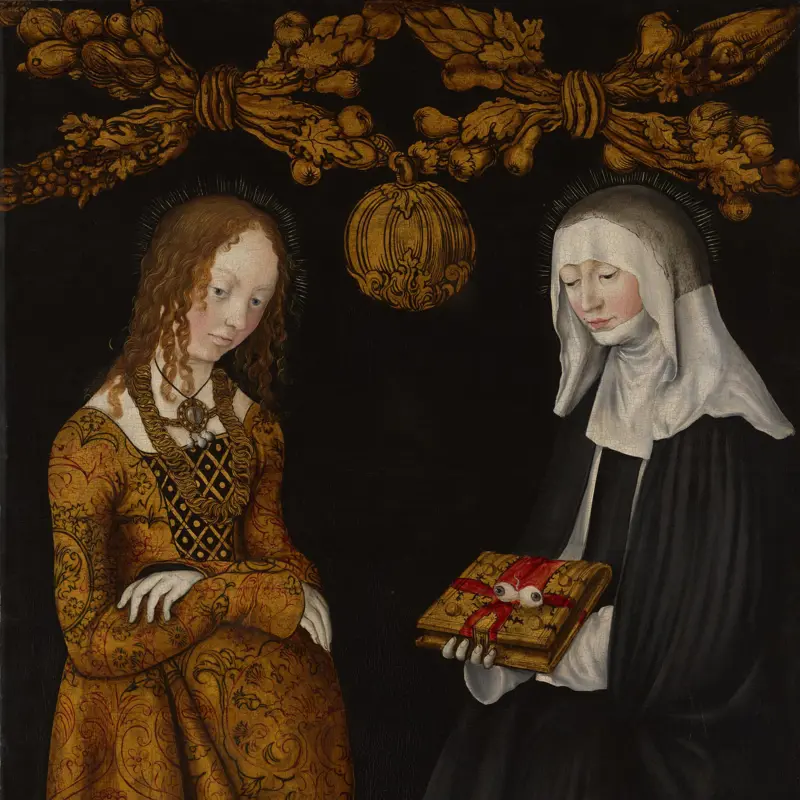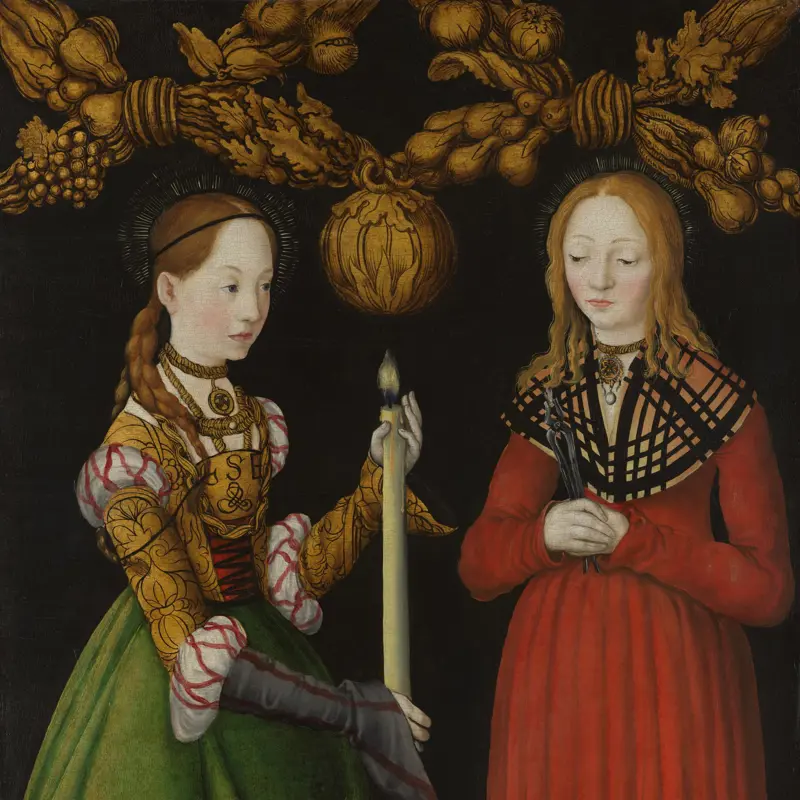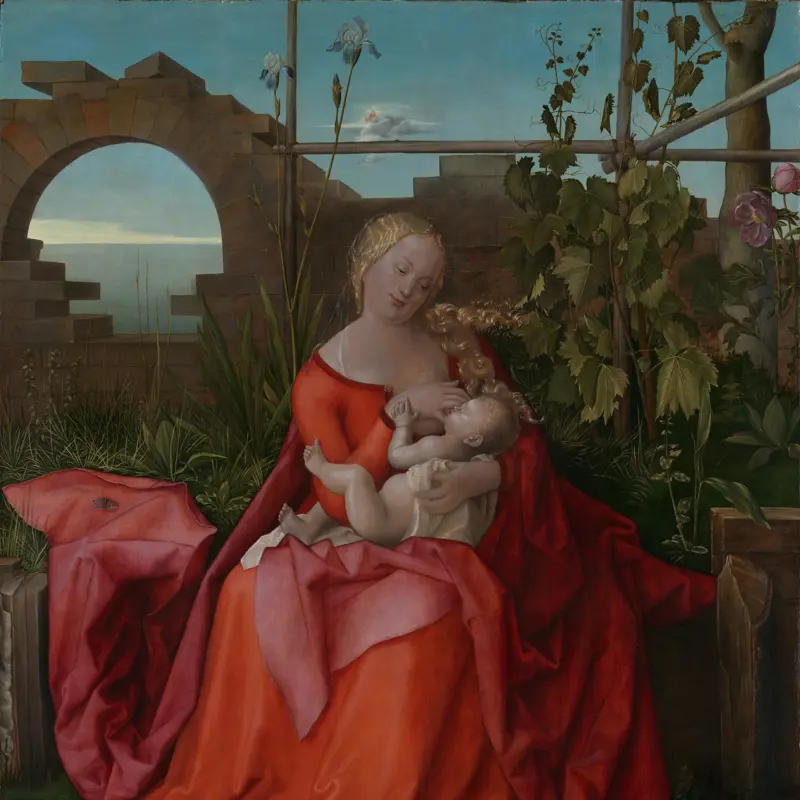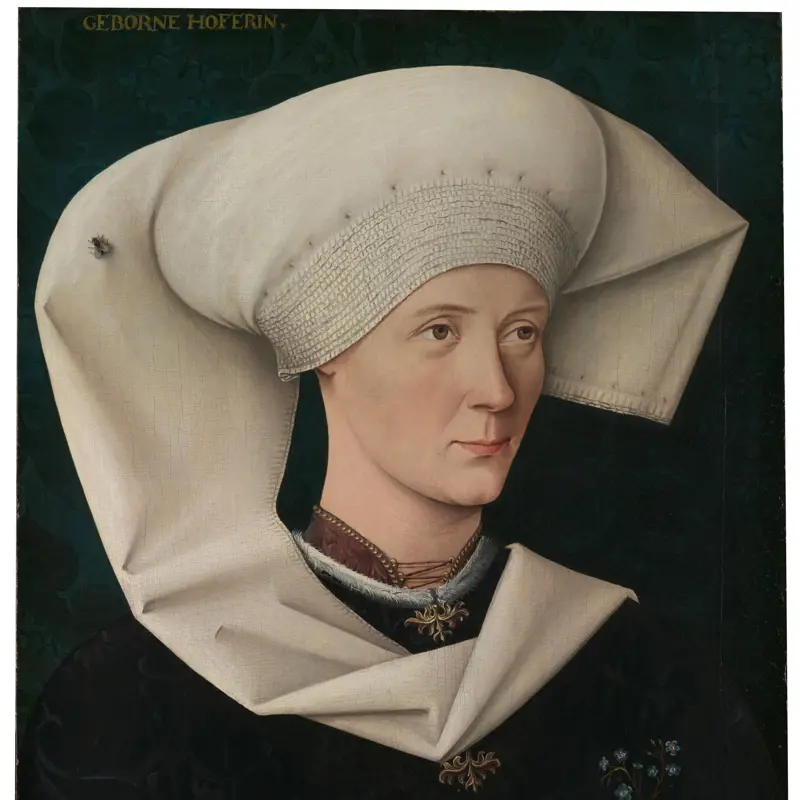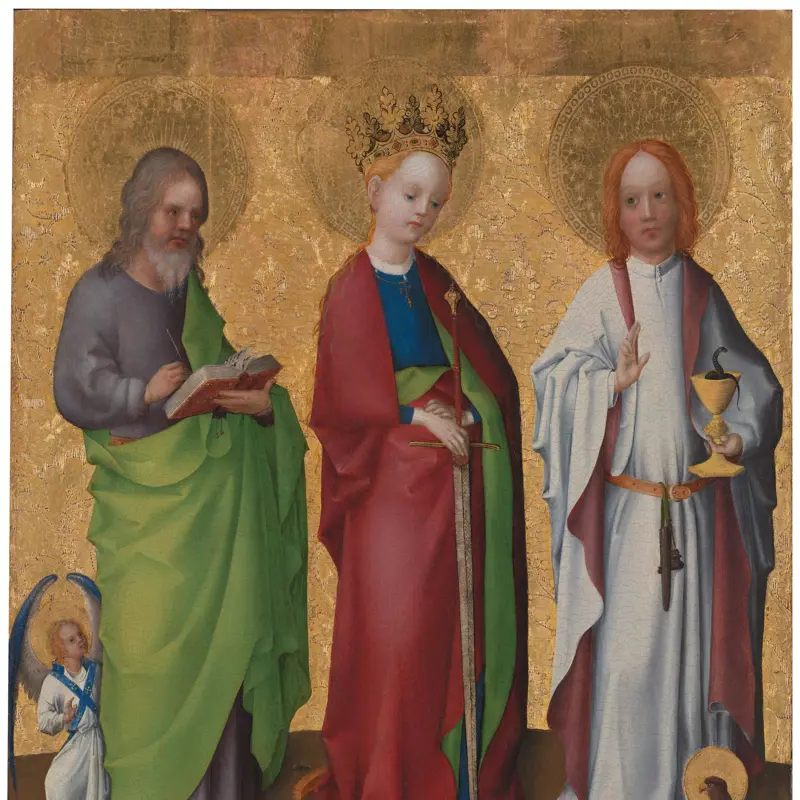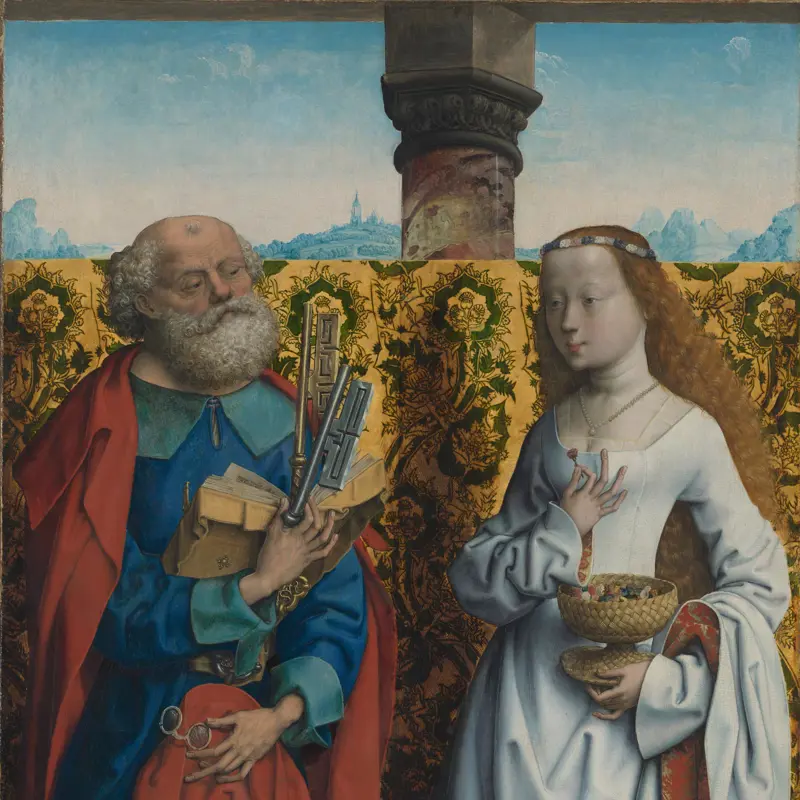In the early 15th century, German-speaking areas in Central Europe were divided into different territories ruled by the Holy Roman Emperor. Districts controlled by powerful bishops, free imperial cities and trading posts like Cologne on the river Rhine, attracted scholars and artists. Patrons showed their wealth by commissioning gold-ground paintings and precious metalwork.
The advent of the printing press around 1450 revolutionised the spread of knowledge across Europe. It also led to a new art form: printmaking. Prints transformed the exchange of artistic ideas. Albrecht Dürer, Hans Baldung and Albrecht Altdorfer pushed the boundaries of imagination and skill in this new medium. Their paintings echo the expressive and linear qualities of woodcuts and engravings.
Despite the religious and political upheaval caused by the Reformation, the arts flourished during that time. From Nuremberg, Dürer travelled to Italy and the Netherlands where he was received as a celebrity. He was an extraordinary draughtsman with a keen interest in studying nature. His prints, portraits, altarpieces and non-religious subjects transformed painting both in the Holy Roman Empire and beyond. Lucas Cranach's workshop produced portraits and mythological subjects in a sophisticated style suited to the courtly patrons who employed him.


